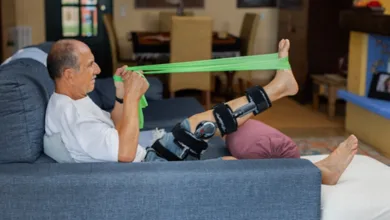Interesting Facts About Migraines

Some advice on “migraine brain”.
Migraines affect one in four households, but many think of them as a “regular headache” or “sinus headache.” However, most people do not get headaches they can remember. There are many misconceptions around migraines – what they are, how to address them, etc. Let’s break down the facts from fiction.
What Is a Migraine?
In medicine, a migraine implies a recurring, primary headache disorder that meets specific criteria.
These are headaches you are genetically predisposed to get, triggered by something in your environment.
Migraine Sufferers Have Powers
Migraine sufferers typically have what is known as “migraine brain”. This “power” gives them a heads up that a migraine is coming. Migraine brain is a blessing because it often warns the individual something might be off-balance in the internal or external environment. The curse is that sometimes we know we are stressed or that the weather is changing, yet we still get that headache.
Fact: There Is No Cure for Migraines
Another common misconception is that there is cure for migraines. Much like other chronic conditions, this is a life-long neurological disorder. But, unlike most diseases, migraines can improve with time!
Healthy lifestyle habits that are a good for any brain are especially important for the migraine brain.
Fact: Getting Into a BRAIN HEALTH Routine Can Help Combat Migraines
Following the suggestions below can aid in fending off migraines:
- Engage in daily brain activity for at least one hour, such as Sudoku, Jeopardy, Luminosity (challenging but not frustrating).
- Participate in a weekly social event for at least one hour and monthly volunteer activities.
- Eat regular meals with balanced nutrition. Include deeply colored fruits and vegetables at every meal. Eat fish (or similar vegetarian option) at least once per week.
- Limit caffeine after 2 p.m.
- Stay hydrated!
- Exercise regularly (walking, recumbent bike, simply fit board, yoga, etc.) with a goal of at least 20 min per day.
- Get regular sleep. Consider melatonin: 0.5-1 mg 4 hours before desired bedtime and, if needed, another 3-5 mg dose of Melatonin 45-60 min before bed.
Fact: Non-Prescription Treatments May Help with Headache Prevention, But Require a THREE-MONTH Trial:
- Co-Enzyme Q10 300 mg daily (if nausea, try 100 mg three times per day).
- Riboflavin 400 mg daily, OR Riboflavin 5’Phosphate 73 mg daily (this will cause neon urine, so drink plenty of fluids).
- Magnesium Citrate OR Magnesium Bisglycinate 500 mg daily (if diarrhea, take 250 mg daily).
- Progressive relaxation 5-10 min daily, with additional times as needed throughout the day.
- Cefaly Prevent (or Dual) Device, worn 20 min daily (and as needed) for headache breakthrough.
More facts and information about migraines can be found at MyIHaC.com, Thorne.com/u/IHaC or cefaly.com.
DISCLAIMER: This information is for educational purposes only. It is not intended to diagnose or treat any medical condition. It is to enhance discussions between you and your medical provider.





